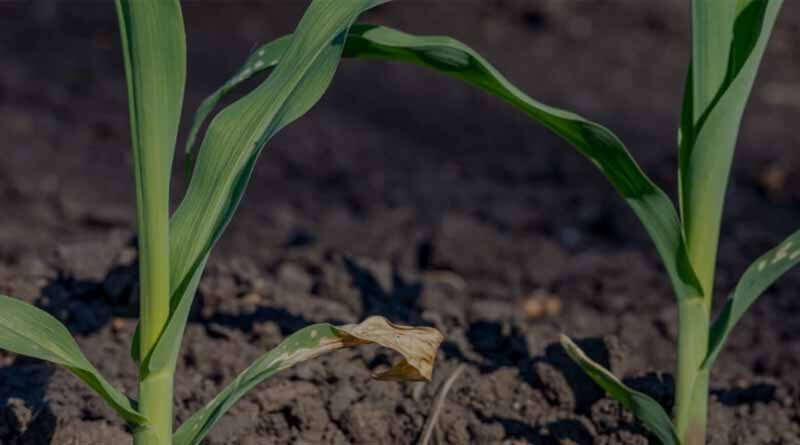Zinc Uptake for Successful Post Emergence Crops in Australia
25 June 2022, Australia: Zinc deficiency in Australia is one of the most common micronutrient deficiencies in crops. Zinc deficiencies can occur on a wide range of soils, from heavy alkaline clay soils to light sandy acidic soils.
In crops, zinc is vital for the formation of chlorophyll and carbohydrates. It plays an important role in the movement of water in plants, aiding in root development and starch formation. Zinc is also essential in aiding the production of growth hormones such as Auxins.
The total amount of zinc in your soil can be directly related to the parent material, for example, basalt soils can contain high levels of zinc, whereas sandy soils can be low in zinc.
Although zinc in organic matter is fairly immobile and very little is leached from the soil, it is often not in a readily available form in the soil. There are many factors that can play a key role in the availability of zinc for plant uptake, such as:
- Organic matter – Zinc can interact with soil organic matter by forming both insoluble and soluble zinc complexes. It can be mineralised and made available to plants from decomposing organic matter.
- The amount of chelating agents in the soil have a direct impact on the movement of Zinc. Chelating agents increase the solubility of zinc from the soil and aid its movement through to the roots of the plants.
- Climatic conditions can also play a role in zinc availability. A wet winter-spring season, like the one we are experiencing in Australia, can result in zinc deficiency in plants, this is a result of reduced microbiological activity. Microbiological activity is important to assist in releasing zinc from organic matter. Because of this waterlogging can tend to increase zinc deficiency.
- High levels of available iron can adversely affect the plants ability to take up zinc.
- The incorrect application of phosphorus fertiliser may induce zinc deficiency, by affecting the physiological availability of zinc in plant tissues. It has been found that Vesicular arbuscular mycorrhiza (VAM) colonisation of plant roots is reduced in crops growing in soils high in phosphorus. That is why it is really important to know your soils and apply the correct fertiliser types and rates.
- High water tables or soil compaction can affect plant root development. This can directly affect the dispersion of zinc in the soil, leading to zinc deficiency.
VAM is a beneficial fungi which infects the roots of most crops (except canola). The mycelium (fungal threads) assist the plants ability to uptake immobile nutrients such as phosphorus and zinc, It does this by increasing the root surface area.
VAM relies on plants for survival. Fallowing land for a long period, e.g. 12 months, or growing non-host crops (canola), can cause populations to decline, thus increasing the risk of zinc deficiency.
https://www.sciencedirect.com/topics/earth-and-planetary-sciences/vesicular-arbuscular-mycorrhiza
Some symptoms of zinc deficiency are:
- Brown or yellow patches on the new growth
- Patchy appearance of the crop
- Brown necrotic spots on the leaves
- Poor seed set – young tillers may die before setting seed
- Poor yield/low protein
Zinc toxicity is uncommon, and is more likely to occur in acid soils. High levels of zinc can inhibit a plant’s ability to uptake P and Fe.
Zinc as a foliar spray should be applied in small amounts, more regularly. Early in the morning or early evening to reduce evaporation and maximise the intake of zinc into the plant. Best results occur when applied before symptoms of deficiency are noticeable.
OmniZinc is a fully chelated form of zinc, making it both more efficient and effective to use. It mixes well with a wide range of liquid fertilisers, humates and chemicals.
| Crop | Rate L/Ha | Timing | Water L/Ha |
| Cereals | 0.5 – 2.5 | 3-5 leaf stage | 50-100 |
| Canola | 0.5 – 2.5 | 4-9 True leaves | 50-100 |
| Legumes | 0.5 – 2.5 | 10-14 days before flowering, sooner if a deficiency is known. | 50-100 |
| Pasture | 0.5 – 2.5 | Good leaf cover | 50-100 |
| Cotton | 1 – 2.5 | Prior to flowering | 50-100 |
| Grapevines | 1 – 3 | Flower bud visible & flower bud separated. | 200-1000 |
| Citrus | 2 – 4 | Spring, Summer, Autumn flush | 500-1000 |
| 2 – 5 | Soil application |















